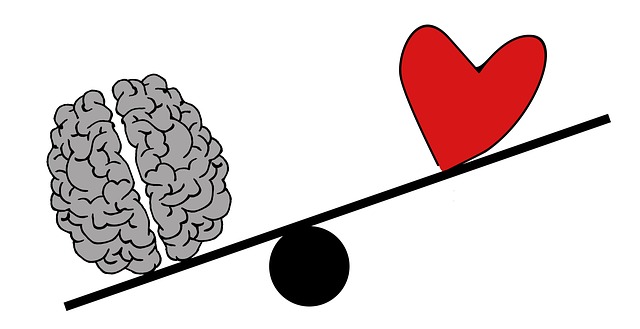What is Mindfulness?
Mindfulness is commonly defined as bringing one’s attention on purpose to what is happening in the present moment in an accepting, non-judgmental way.
How do we use Mindfulness in Therapy?
Mindfulness has been incorporated into therapy through the so-called third-wave therapies, which include DBT, ACT, and mindfulness-based therapies.
I use many of these with my female clients to treat anxiety and depression and adhd.
I teach my adhd clients mindfulness practices to help them slow down their minds and think about their lives and choices in a different way. I also teach mindfulness so they can observe patterns in their lives.
What are the benefits of mindfulness for ADHD women?
While it may seem counterintuitive, mindfulness can bring numerous benefits to individuals with Attention Deficit Hyperactivity Disorder (ADHD), including women. In this blog post, we will explore the advantages of incorporating mindfulness into the lives of ADHD women seeking support.
1. Improved Focus and Attention: One of the core symptoms of ADHD is difficulty in maintaining attention and staying focused. Mindfulness can be a valuable tool in helping individuals with ADHD train their minds to stay present and focused on the task at hand. By practicing mindfulness, women with ADHD can enhance their ability to direct their attention, resulting in improved concentration and productivity.
2. Stress Reduction: Living with ADHD can often be accompanied by high stress and anxiety levels. Mindfulness practices, such as deep breathing exercises and body scans, can help adhd women manage their stress levels and promote relaxation. By paying attention to the present moment without judgment, women with ADHD can cultivate a sense of calm and reduce the overwhelming feelings.
3. Emotional Regulation: ADHD can also be associated with emotional dysregulation, making it challenging for women to manage their emotions effectively. Mindfulness can provide women with ADHD a greater sense of self-awareness, allowing them to recognize and understand their emotions as they arise.
Mindfulness can be practiced daily through a variety of interventions. Meditation isn't the only method to practice mindfulness. I rarely teach meditation.
Many informal and formal practices exist.
Formal practices include body scans, yoga, meditation, journaling, reflecting, pausing, check-ins, and breathing.
Informal practices include things such as washing the dishes, eating or walking mindfully, being in nature, gardening, and dancing art.
Mindfulness has been shown to assist with anxiety and depression, physical health, pain and stress, and more. Mindfulness is very beneficial and a foundation for helping slow down your mind and help you feel more calm.
What Techniques Can I Use to Practice Mindfulness as an ADHD Woman?
Here are some specific techniques that can be used to practice mindfulness for ADHD:
1. Breathing exercises: Deep breathing exercises are one of the simplest and most effective ways to cultivate mindfulness. By focusing on your breath and observing each inhalation and exhalation, you can bring your attention to the present moment and anchor yourself in the here and now. Try counting your breaths or using a guided breathing app to assist you in maintaining focus.
2. Body scan meditation: This technique involves systematically directing your attention to different parts of your body, from head to toe, and noticing any sensations or areas of tension. By practicing body scan meditation, you can develop a heightened awareness of your physical sensations, which can help you recognize and release stress or discomfort.
3. Mindful walking: Engaging in mindful walking can be a valuable tool for enhancing focus and reducing restlessness. Pay attention to your feet, legs, and body sensations as you walk. Notice the rhythm of your steps, the feeling of the ground beneath your feet, and the movement of your muscles. If your mind starts to wander, gently bring your focus back to the present moment.
4. Mindful eating: Many individuals with ADHD struggle with impulsive eating and mindless snacking. Mindful eating involves paying attention to the sensory experience of eating, such as the food's taste, texture, and smell. Slow down and savor each bite, chewing slowly and fully experiencing the flavors. By practicing mindful eating, you can increase your awareness of hunger and fullness cues, helping you make healthier choices and avoid overeating.
5. Guided meditations: Guided meditations can be a helpful tool for individuals with ADHD, as they provide structure and guidance during the practice. You can find a variety of guided meditations online or through meditation apps, ranging from short sessions to longer ones. Find a guided meditation that resonates with you and commit to practicing it regularly.
6. RAIN practice: RAIN is an acronym that stands for Recognize, Allow, Investigate, and Nurture. This practice can be especially beneficial for ADHD women who often struggle with emotional regulation. When you notice a problematic thought or emotion arising, please take a moment to recognize it and acknowledge its presence. Allow yourself to feel the emotion without judgment or resistance. Then, investigate the emotion by exploring its sensations and underlying causes. Finally, nurture yourself by offering yourself compassion and kindness in the face of difficulty. The RAIN practice can help you develop emotional resilience and cultivate a greater sense of self-awareness.
What are The Challenges to Practice Mindfulness as an ADHD Woman?
ADHD women may face several challenges when attempting to practice mindfulness and self-compassion. These challenges can include:
- Difficulty focusing: The mind may wander easily, leading to frustration and discouragement. If this leads to self-criticism, mindfulness may not be for you. Always know there are many different ways to support yourself. Mindfulness may not be for you!
- Inconsistent routines: Inconsistent practice can make it difficult to see the benefits and stay motivated.
- Negative self-talk: You may notice your negative self-talk is amplified, making it hard to practice mindfulness.
- Trauma: You may become distressed if practicing meditation and trauma that is unresolved surfaces.

Becoming mindful and recognizing our suffering is the first step to mastering self-compassion, which most ADHD women need to learn and practice.
Mindfulness paired with self-compassion helps adhd women:
- Be less judgemental of themselves
- Have more emotional regulation
- Make choices to care for themselves
- Set boundaries
- Practice self accommodation
- Practice self-compassion when they experience rejection sensitivity
- Recognize relationships and other life patterns that aren't serving them
Mindfulness is directed at the experience (awareness and understanding of what we're going through), while self-compassion is directed at the experiencer (the person undergoing the suffering - ourselves). The first step of mindfulness is self compassion. So mindfulness is a precondition for self compassion. Both of these tools are invaluable for adhd women.
Resources for women who want to learn more about Mindfulness and ADHD
Neff, K. D., & Dahm, K. A. (2015). Self-compassion: What it is, what it does, and how it relates to mindfulness. In M. Robinson, B. Meier & B. Ostafin (Eds.), Handbook of mindfulness and self-regulation (pp. 1–40). New York:
Springer. Neff, K. D., & Germer, C. K. (2012). A pilot study and randomized control
Medical information obtained from this website is not intended as a substitute for professional care. If you have or suspect you have a problem, you should consult a healthcare provider.
Kristen McClure: Neurodivergent-Affirming ADHD Therapist and Coach with 30 years experience in North Carolina and South Carolina Offering virtual therapy and coaching services across North Carolina, including Ashville, Raleigh, Durham, Wilmington, Greenville, and more. Also serving major South Carolina cities such as Charleston, Columbia, Greenville, Spartanburg, Rock Hill, and more.


